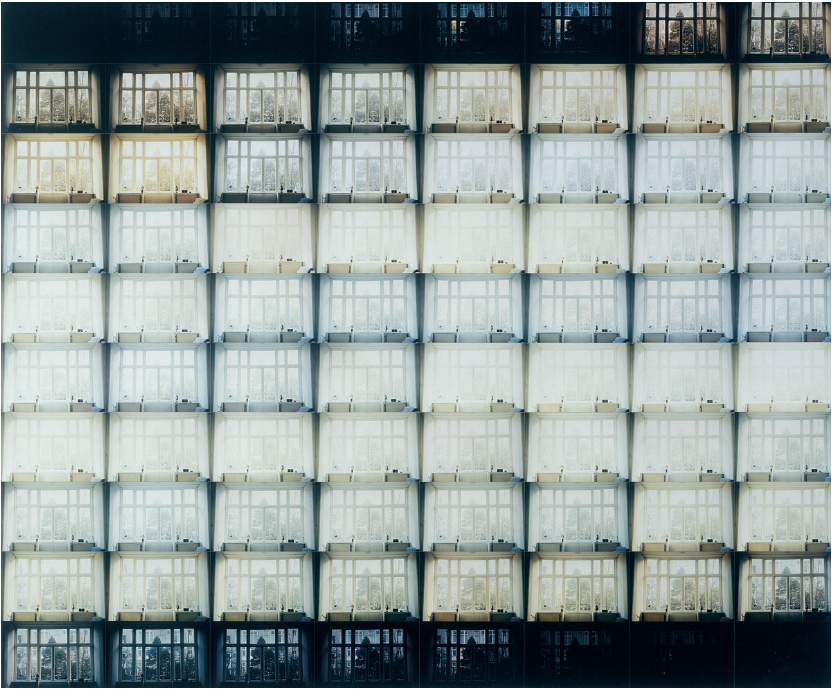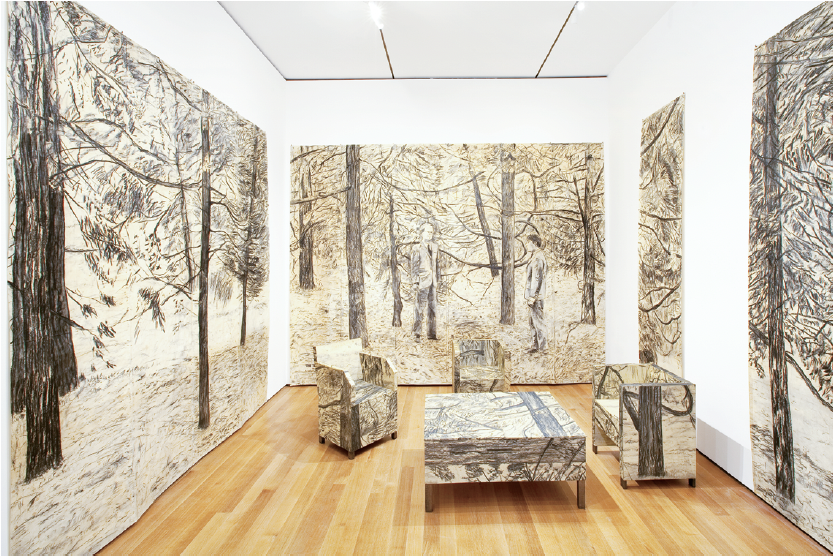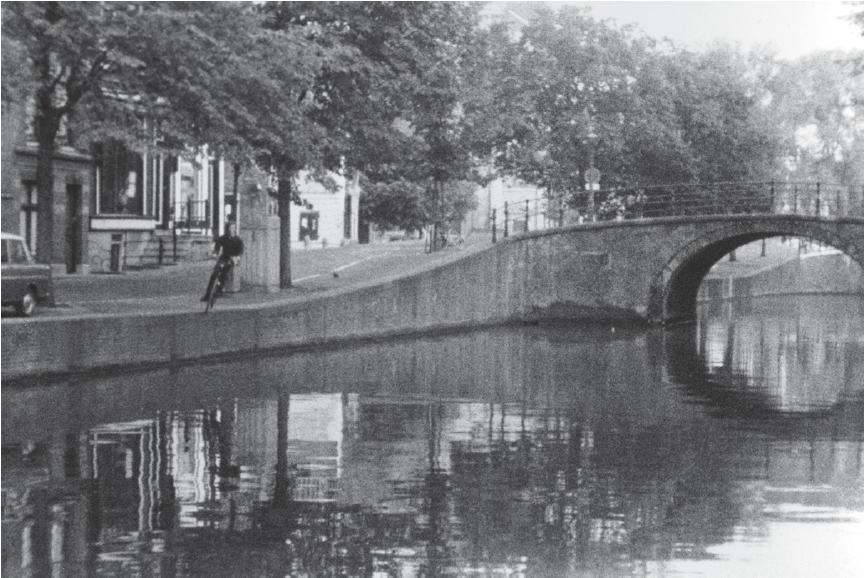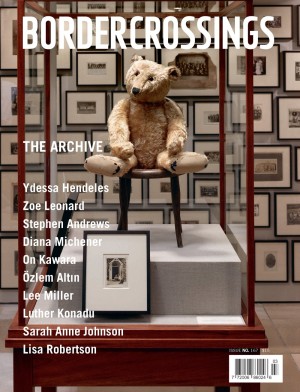“In and Out of Amsterdam: Travels in Conceptual Art 1960-1976” “In and Out of Amsterdam: Art + Project Bulletin, 1968-1989”
“In and Out of Amsterdam: Travels in Conceptual Art, 1960–1976” is actually two related exhibitions, one featuring the work of 10 artists who made art in Amsterdam during this period; the other is the outstanding archive of conceptual activity initiated by Van Beijeren and Van Ravesteijn under the gallery name Art & Project.
Amsterdam has long been a hub with a history of being one of Europe’s main financial centres, first with the tulip trade in the 1700s and later with diamonds. It sits geographically in the centre of Europe, so it seems obvious that artists would begin making art there as the work in the ’60s became more transportable and exhibitions that included international names made the movement of ideas and people a necessary part of the process. Conceptual art also had that one thing that made it easy to move around: it was an idea—no crates, no shippers and no customs officials. Performance-based pieces required the artist’s body, so they too moved around, thus creating networks like Fluxus, where the same artists would meet repeatedly in different locations around the world.

Jan Dibbets, The Shortest Day at my House in Amsterdam, 1970, 80 chromogenic color prints, mounted on board, overall 69 3/8” x 84 1/4”. Photograph: Musée d’Art Moderne de la Ville de Paris/Roger-Viollet. Musée d’Art Moderne de la Ville de Paris, France. Gift of the Society of Friends of the Musée d’Art Modern de la Ville de Paris, 2002. © 2009 Jan Dibbers/Artists Rights Society (ARS), New York.
When Geert van Beijeren and Adriaan van Ravesteijn decided to start Art & Project in September 1968, the world was witnessing massive social change. Student protests, beginning in May of that year in France, Germany, the US and elsewhere, were challenging the cultural hegemony and hierarchy of existing institutions from the universities to the factories. Society was transforming and how we thought of the physicality of art was in step with new scientific and sociological paradigms informing our relationships to each other, the planet and the universe.
Art as idea was the raison d’etre of Art & Project, hinging on the publication of a bulletin in tabloid format for each exhibition. This archive of documentation has been donated to the Museum of Modern Art and forms the focal point of the exhibition. It’s an impressive collection of works and a who’s who of conceptual art, from Sol LeWitt to Lawrence Weiner, Gilbert and George, Bas Jan Ader, Hanne Darboven and others. The consistency of the project speaks to the rigour with which the directors approached the programming and to its role within an international discourse. The bulletins are a manifestation of a rare generosity toward the future in that the accumulation of this archived material is now available to the public and is one of the most important documents of an era, and an art practice, in the world.

George Passmore and Gilbert Proesch, The Tuileries, 1974, charcoal on paper sculpture (drawings hung on wall and mounted on wood), eight parts, overall dimensions variable. Installation view, the Museum of Modern Art. Photograph: Jason Mandella. © 2009 Gilbert & George.
I was struck by how current the work looks in this historical exhibition. I thought that an exhibition of documents pinned to the wall would seem dated, attached to the time in which they were generated. But on the contrary, it was fresh, current and felt as though it could have happened yesterday, probably due to the impact the work has had on successive generations of artists. In comparison to contemporary practices, “In and Out of Amsterdam” reminded me that big “C” Conceptual Art is not about jokes, clever ideas and artists with their tongues planted firmly in their cheeks but, rather, ideas with significant implications, philosophically and politically. Published in the first issue of Art & Project Bulletin, Van Beijeren and Van Ravesteijn expressed their own interests and what they were setting out to achieve: “Art & Project plans to bring you together with the ideas of artists, architects and technicians to discover an intelligent form for your living and working space. Art & Project invites you to participate in its exhibitions which will explore ways in which art, architecture, and technology can combine with your own ideas.” This is an extremely generous, inclusive statement, acknowledging the artist and viewers as equal participants and is a sentiment that permeates every part of this exhibition.
For “Bulletin 11,” Stanley Brouwn published a text that reads, “walk during a few moments very consciously in a certain direction; simultaneously an infinite number of living creatures in the universe are moving in an infinite number of directions.” I think this statement could be made about the activities found in this exhibition. For a period of time, some people moved in a certain direction, but, and here’s the point, they knew that everywhere else an infinite number of creatures were moving in an infinite number of directions. They were just one part of a whole, and that part was documented. Just a fragment, but a significant fragment. ❚

Bas Jan Ader, Fall II, Amsterdam, 1970, film: 16mm, black and white, silent, 19 seconds. Museum Boijmans Van Beuningen, Rotterdam. Courtesy of the Bas Jan Ader Estate and Patrick Painter Editions.
“In & Out of Amsterdam: Art & Project Bulletin, 1968–1989” was exhibited at MOMA in New York from July 15 to October 26, 2009. “In & Out of Amsterdam: Travels in Conceptual Art, 1960–1976” was exhibited at MOMA in New York from July 19 to October 5, 2009.
Randall Anderson is an artist and writer living in Montreal.

